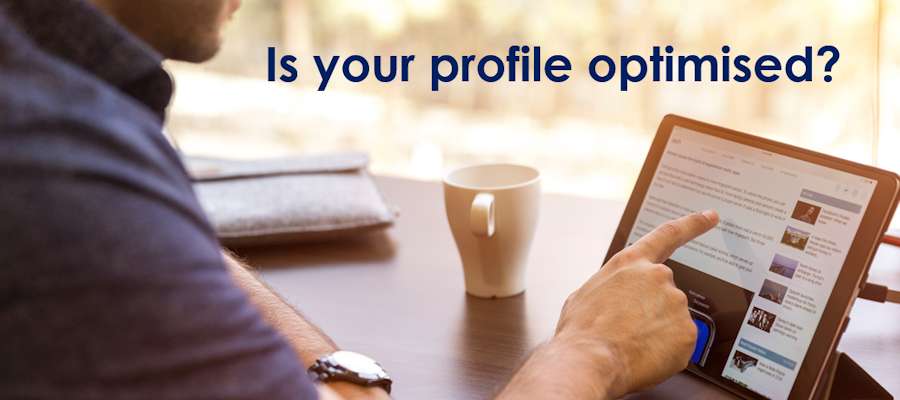
LinkedIn was originally a platform set up to provide employers and job hunters with a means of getting connected and, through their intermediate connections, to create a ‘warm’ referral. Then, with the advent of Facebook, the LinkedIn managers stepped things up to compete on the social spectrum.
Even though LinkedIn was bought by Microsoft a couple of years ago and has had a facelift, the personal profile still resembles a CV. If you’re aiming to get a job or get head-hunted, that’s great, but if you’re an employee or a business owner, it’s less helpful.
Each of these groups of people will have a different viewpoint on what they want from their LinkedIn profile. That means that optimising your profile will require different strategies. There are a few common issues though:
- Don’t add anything to your name. If you’re Robert Smith, but everyone calls you Rob, then put Rob Smith. If you have a PhD (of which you should definitely be proud), you don’t need to put that on the end of your name (or in front of it). Dr is a title, like Mr or Ms and you wouldn’t put Mr Rob Smith. Use the name people would introduce you by in a face-to-face meeting.
DO put your own name – not your business name or anything that isn’t your name. That’s what the professional headline is all about. - Your professional headline is that line of text that comes under your name. You have 120 characters to get people’s attention – use them wisely!
- Your photograph should be a headshot – not a full length or even a head and chest shot. Remember that when it becomes avatar size it will become unrecognisable if your face is any smaller than the full frame size.
Aim for ‘friendly and approachable’ (that means smile) and look directly at the camera. If you want to be seen as professional, invest in a decent photograph. Don’t crop a party shot or a photo with other people in – it just looks amateurish and, if you want to use LinkedIn properly you don’t want that image. - Write something in your summary. It’s an opportunity to make even more of an impact. You’ve got 2000 characters to play with – use them!
- Write in the first person (I), not in the third person (Rob). If you use the 3rd person it sounds a little pompous – or as though someone else has written your profile!
Job hunters
If you’re looking for a job decide what kind of role you are aiming for and optimise your profile with that in mind.
Clearly if your current employer doesn’t yet know you’re looking to move, you will need to be circumspect about what you say. That doesn’t mean you can’t ensure your summary and the text under your current and previous roles focuses on the skills you have under your belt that are relevant to your perfect job.
Employees
If you’re an employee and not actively job-hunting you have a balancing act to achieve. As it is a personal profile your profile needs to be about you, but it will win you lots of brownie points if you include some positive information about your employer’s business too. Clearly if you’re the marketing manager or director you might want to read the next bit.
Business owners
If you own your own business your LinkedIn profile is a marketing tool. However, remember that people are not interested in what you DO, they’re interested in what they GET, so make sure you write about benefits, rather than products or services.
Use your key words (no need for keyword stuffing though) and remember that, with millions of people on LinkedIn every day, your LinkedIn profile is likely to rank higher than your own website in searches.
